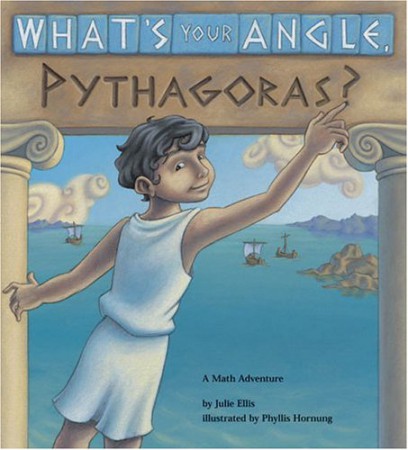What's Your Angle, Pythagoras

Julie Ellis / Grades 3-4 /
A fictionalized look at Pythagoras as he discovers his famous theorem.
He is depicted as a curious boy who travels with his father from
Samos to Alexandria, where he meets a builder named Neferheperhersekeper,
who introduces him to the right angle. He begins to experiment,
observing and noting the fixed and unvarying mathematical
nature of triangles–right triangles, to be precise.
Standards
|
MST
|
Standard 3: Mathematics
3.2 Numbers and Numeration: Students use number sense and numeration to develop an understanding of the multiple uses of numbers in the real world, the use of numbers to communicate mathematically, and the use of numbers in the development of mathematical ideas.
3.3 Operations: Students use mathematical operations and relationships among them to understand mathematics.
|
ELA
|
Standard 1: Language for Information and Understanding
1.1 Listening and Reading: Listening and reading to acquire information and understanding involves collecting data, facts, and ideas; discovering relationships, concepts, and generalizations; and using knowledge from oral, written, and electronic sources.
Standard 2: Language for Literary Response and Expression
2.1 Language for Literary Response and Expression: Listening and reading for literary response involves comprehending, interpreting, and critiquing imaginative texts in every medium, drawing on personal experiences and knowledge to understand the text, and recognizing the social, historical and cultural features of the text.
|
Social Studies
|
Standard 3: Geography
3.1 Geography can be divided into six essential elements which can be used to analyze important historic, geographic, economic, and environmental questions and issues. These six elements include: the
world in spatial terms, places and regions, physical settings (including natural resources), human systems, environment and society, and the use of geography.
|


